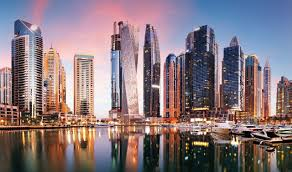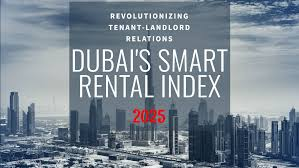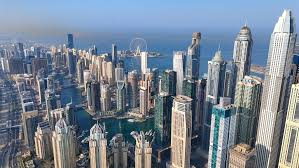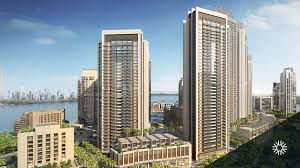Now Reading: 5 Clever Ways to Maximize Rental Income in 2025
-
01
5 Clever Ways to Maximize Rental Income in 2025
5 Clever Ways to Maximize Rental Income in 2025

Table of Contents
Maximize Rental Income; Dubai’s real estate market, valued at AED 761 billion ($207 billion) in 2024 with 170,992 transactions (up 40.3%), remains a global investment magnet, per X posts. In Q1 2025, 111 sales exceeded AED 10 million ($2.7 million), fueled by 19 million tourists and a projected 5.8 million population by 2027.
Rental yields in prime freehold zones like Dubai Marina (6.5–8%) and Palm Jumeirah (7–9%) outpace U.S. markets like Miami (4–6%), driven by no capital gains tax (CGT) and Dubai’s 6.2% GDP growth. U.S. investors, leveraging Golden Visa eligibility (AED 2 million investment) and tax-free income below AED 375,000 ($102,000), seek strategies to boost rental returns.
This article outlines five clever ways to maximize rental income in Dubai’s 2025 market, with practical steps and U.S. tax considerations, without external links.
Why Maximize Rental Income in Dubai?

Dubai’s rental market thrives on tourism, expatriates (70% of population), and infrastructure growth, with short-term rentals yielding 30–50% more than long-term leases, per web data. RERA’s regulatory framework ensures investor security, while 5G and PropTech streamline operations. U.S. investors benefit from:
- High Yields: 6–11% in prime areas, with 5–8% price growth.
- Tax Advantages: No UAE CGT; 9% Corporate Tax (CT) above AED 375,000 offset by IRS Form 1116 credits.
- Demand Surge: 76,000 new units in 2025 fall short of demand, per Bayut.
- Flexibility: Seasonal pricing maximizes winter peak returns.
Below are five strategies to optimize rental income in 2025.
5 Clever Ways to Maximize Rental Income in 2025
1. Optimize for Short-Term Rentals
Short-term rentals via platforms like Airbnb yield 7–11% in hotspots like Downtown Dubai, compared to 4–6% for long-term leases, per Colife. Properties in Dubai Marina (AED 1.5 million studios) generate AED 90,000–120,000 annually with 80% occupancy.
- How It Works: List furnished units for daily/weekly rentals, targeting tourists and professionals. Use dynamic pricing to charge 20–30% more during peak seasons (November–March).
- Impact: Increases income by 30–50%; properties rent 25% faster, per GuestReady.
- U.S. Tax Consideration: Report income on IRS Form 1040, Schedule E; deduct furnishings and management fees (2–3%).
- Action: Invest in Emaar’s furnished units in Downtown Dubai, securing RERA short-term rental permits.
2. Leverage Smart-Home Technology Upgrades

Smart-home features like IoT lighting, AI thermostats, and biometric security, installed in 40% of new villas, boost rental appeal, per 6Wresearch. Properties in Palm Jumeirah with smart tech command 15–20% higher rents.
- How It Works: Install Alexa-enabled systems or solar panels (AED 20,000–50,000) to attract tech-savvy tenants. Highlight energy savings (20–30%) and security in listings.
- Impact: Raises rental income by 10–15%; properties lease 20% faster, per Driven Properties.
- U.S. Tax Consideration: Deduct installation costs on IRS Schedule E; energy credits via Form 5695 for solar upgrades.
- Action: Upgrade Nakheel apartments in JVC with RERA-certified IoT systems, verifying DLD compliance.
3. Target Niche Tenant Segments
Specializing in niche markets—digital nomads, families, or corporate executives—increases demand. Business Bay studios (AED 1.2 million) tailored for professionals yield 6.5–8% with 70% occupancy, per Colife.
- How It Works: Furnish units with co-working spaces for nomads or child-friendly amenities for families. Partner with corporate relocation firms for executive leases in Dubai Silicon Oasis.
- Impact: Boosts occupancy by 10–15%; 20% higher rental rates for specialized units.
- U.S. Tax Consideration: Report income on Form 1040, Schedule E; deduct niche-specific upgrades (e.g., desks) on Schedule E.
- Action: Buy DAMAC’s Business Bay units, customizing for corporate tenants via RERA-registered agents.
4. Minimize Vacancy with Professional Management
Professional property managers like GuestReady reduce vacancy periods by 50%, maintaining 75–85% occupancy in Dubai Hills Estate (5–8% yields). They handle marketing, pricing, and maintenance for 2–5% fees.
- How It Works: Hire firms to optimize listings on Bayut and Airbnb, conduct tenant screenings, and manage turnovers. Use data-driven pricing to avoid voids.
- Impact: Increases annual income by 5–10%; minimizes downtime costs (AED 5,000–10,000/month).
- U.S. Tax Consideration: Management fees deductible on IRS Schedule E; report assets over $50,000 on Form 8938.
- Action: Engage RERA-registered managers for Emaar properties in Dubai Marina, ensuring DLD compliance.
5. Utilize Flexible Lease Structures
Hybrid leases combining short- and mid-term rentals (1–6 months) maximize income in Al Furjan (8–9% yields). Studios (AED 700,000) generate AED 50,000–80,000 annually by adapting to tenant needs, per Bayut.
- How It Works: Offer monthly leases for expats or seasonal workers, switching to daily rates during peak tourism. Use RERA’s Ejari platform for flexible contracts.
- Impact: Raises income by 10–20%; attracts 15% more tenants, per Move Homes.
- U.S. Tax Consideration: Report income on Form 1040, Schedule E; deduct legal fees for contracts on Schedule E.
- Action: Invest in Nakheel’s Al Furjan units, drafting hybrid leases with RERA-approved advisors.
Key Considerations for U.S. Investors
- Risks:
- Oversupply: 76,000 units in 2025 may soften non-prime rents by 5–10%, but prime areas remain strong.
- Operational Costs: Smart upgrades and management fees (2–5%) reduce net yields but boost demand.
- Market Correction: Fitch predicts 10% non-prime price drops by 2026, offset by 5–8% prime growth.
- Tax Compliance: Report UAE income on IRS Form 1040, with Form 1116 for CT credits, Form 8938 for assets over $50,000, and FinCEN Form 114 for accounts over $10,000. UAE’s 5% VAT on commercial properties and 9% CT apply above AED 375,000.
- Regulatory Compliance: RERA mandates rental permits; fines up to AED 500,000 for non-compliance. Verify DLD and Ejari registrations.
- Currency Stability: AED pegged at 1 USD = 3.67 minimizes exchange risk.
Conclusion
Maximizing rental income in Dubai’s 2025 market hinges on short-term rentals, smart-home upgrades, niche targeting, professional management, and flexible leases. These strategies, applied in hotspots like Dubai Marina, Palm Jumeirah, and Al Furjan, deliver 7–11% yields and 30–50% higher returns than long-term rentals. U.S. investors, capitalizing on no UAE CGT, Golden Visa benefits, and IRS deductions, can optimize profits by partnering with RERA-registered developers (Emaar, DAMAC, Nakheel) and ensuring compliance. As Dubai’s tourism and population soar, these tactics solidify its status as a premier rental investment destination. watch here
read more: 7 High-Return Short-Term Rental Hotspots to Know in 2025





















